ACCRONIM
(Activation of
Continental Chloride by Reactive Oxides of Nitrogen in wintertIMe)
February 2009, Boulder,
CO
During
the
nighttime,
NOx is converted into the nitrate radical, NO3,
and
dinitrogen pentoxide, N2O5. The heterogeneous
reaction of N2O5 with
chloride containing mixtures produces nitryl chloride, ClNO2.
The
nitryl
chloride
production
channel
is of interest since during the
night ClNO2 remains largely unreactive but is photolyzed during the
daytime, liberating NO2 and atomic Chlorine. Thus ClNO2
is a
nighttime NOx
reservoir, the formation of which reduces the efficiency
of NOx removal by nighttime reactions of NO3
and N2O5.
Additionally,
atomic
Cl
is
an
extremely strong oxidant, 10-100 times
stronger than OH, the major tropospheric oxidant. These reactions
are largely thought of as marine phenomena, but through the use of long
term chemical measurement databases and aerosol thermodynamic models it
is shown that chemistry is likely widespread as is suggested by recent
field measurements of ClNO2
during the ACCRONIM field campaign in
Boulder, CO.
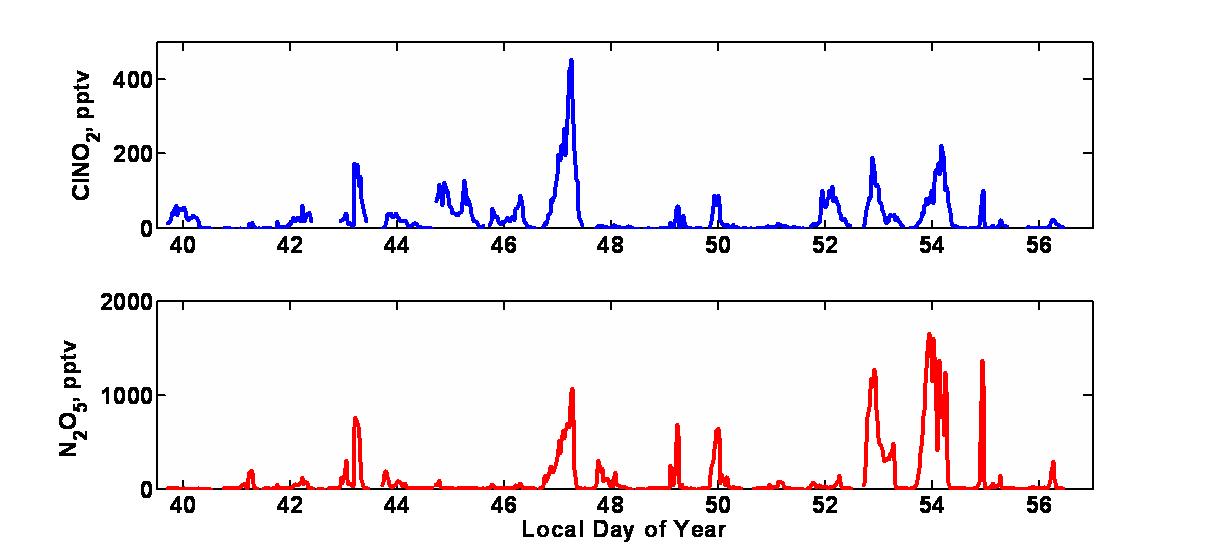
During February 2009 in Boulder,
Colorado, ClNO2 was routinely measured at concentrations
higher than 100pptv whenever the urban plume was sampled. The measurement site was located about
150 m above Boulder proper thus isolating it from direct influences of
local emission. These observations are consistent with
predictions showing significant ClNO2 production potential in continental
regions.
Using a variety of long term databases (NOx
emissions, aerosol and precipitation composition) along with an aerosol
thermodynamic equilibrium model and global chemical transport model,
the nitryl chloride production over the United States can be predicted.
Full time series of the
ACCRONIM measurements of ClNO2 (blue) and N2O5
(red).
|
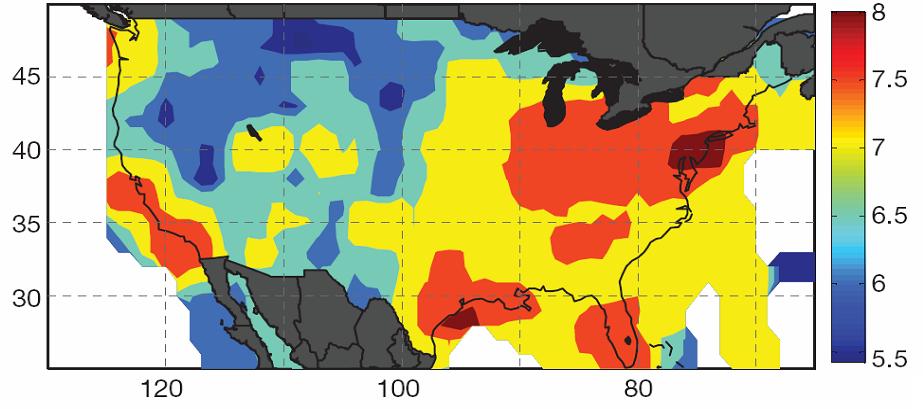
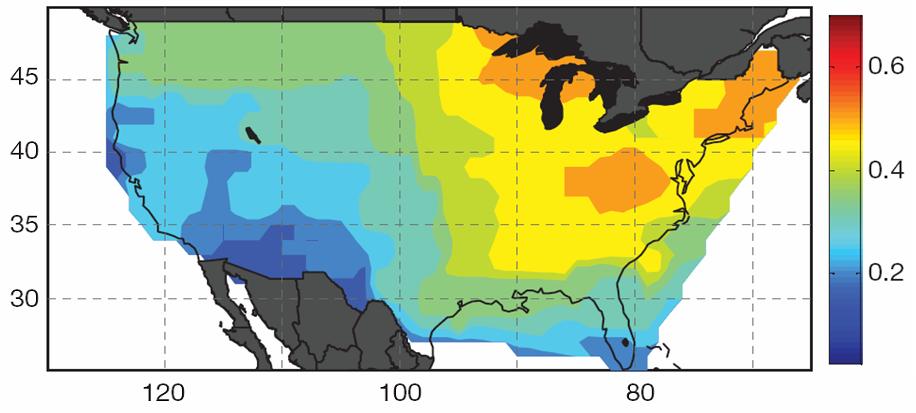
Annual fraction of NOx
that reacts as N2O5.
|
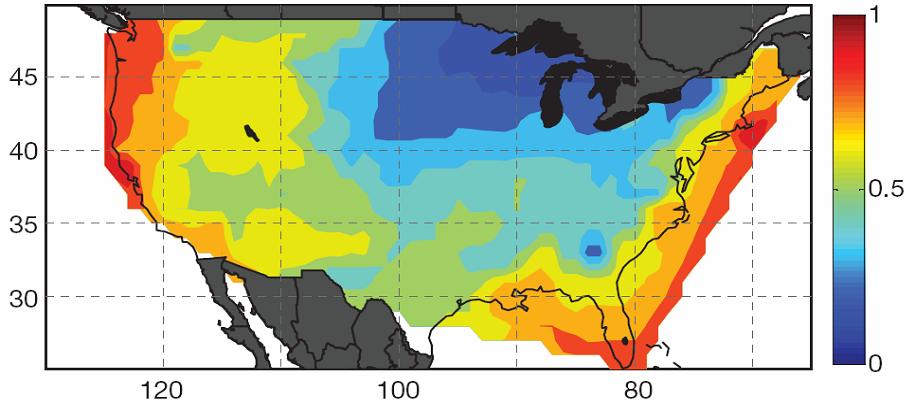
Annual NOx
emissions over the U.S. in kg/year (logarithmic scale).
|
Annual yield of ClNO2 from
heterogeneous N2O5 reactions.
|
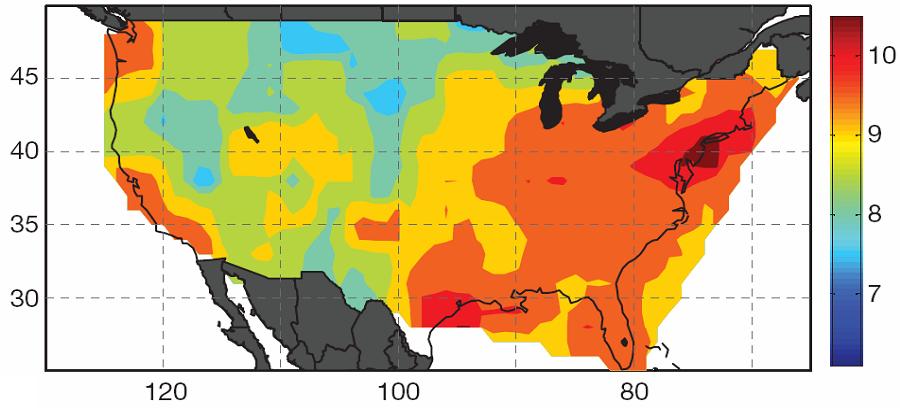
Predicted annual ClNO2
production in Tg Cl/year (logarithmic scale).
|
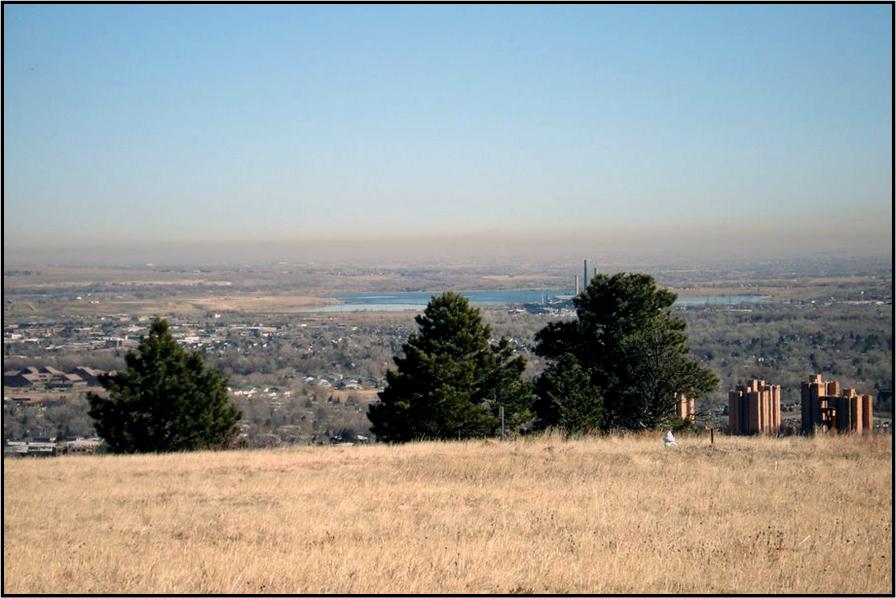
According to these
estimates the largest production takes place in wintertime in high NOx
environments near coastal areas. However, significant production
is also expected well inland, in areas far removed from direct marine
influences. The ACCRONIM measurements support these estimates of
significant continental ClNO2 production.
|
View of Boulder, CO, from
ACCRONIM measurement site. |
For
a
more
complete
discussion: Thornton,
J. A., J. P. Kercher, T. P. Riedel, N. L. Wagner, J. Cozic, J. S.
Holloway, W. P. Dube, G. M. Wolfe, P. K. Quinn, A. M. Middlebrook, B.
Alexander, and S.S. Brown (2010), A large atomic chlorine source
inferred from
mid-continental reactive nitrogen chemistry, Nature, 10.1038/nature08905.
This material is
based upon work supported by the
National Science Foundation under NSF CAREER ATM-0846183 and NSF
ATM-0633897. Any opinions,
findings, and conclusions or recommendations expressed in this material
are those of the author(s) and do not necessarily reflect the views of
the National Science Foundation.
|






